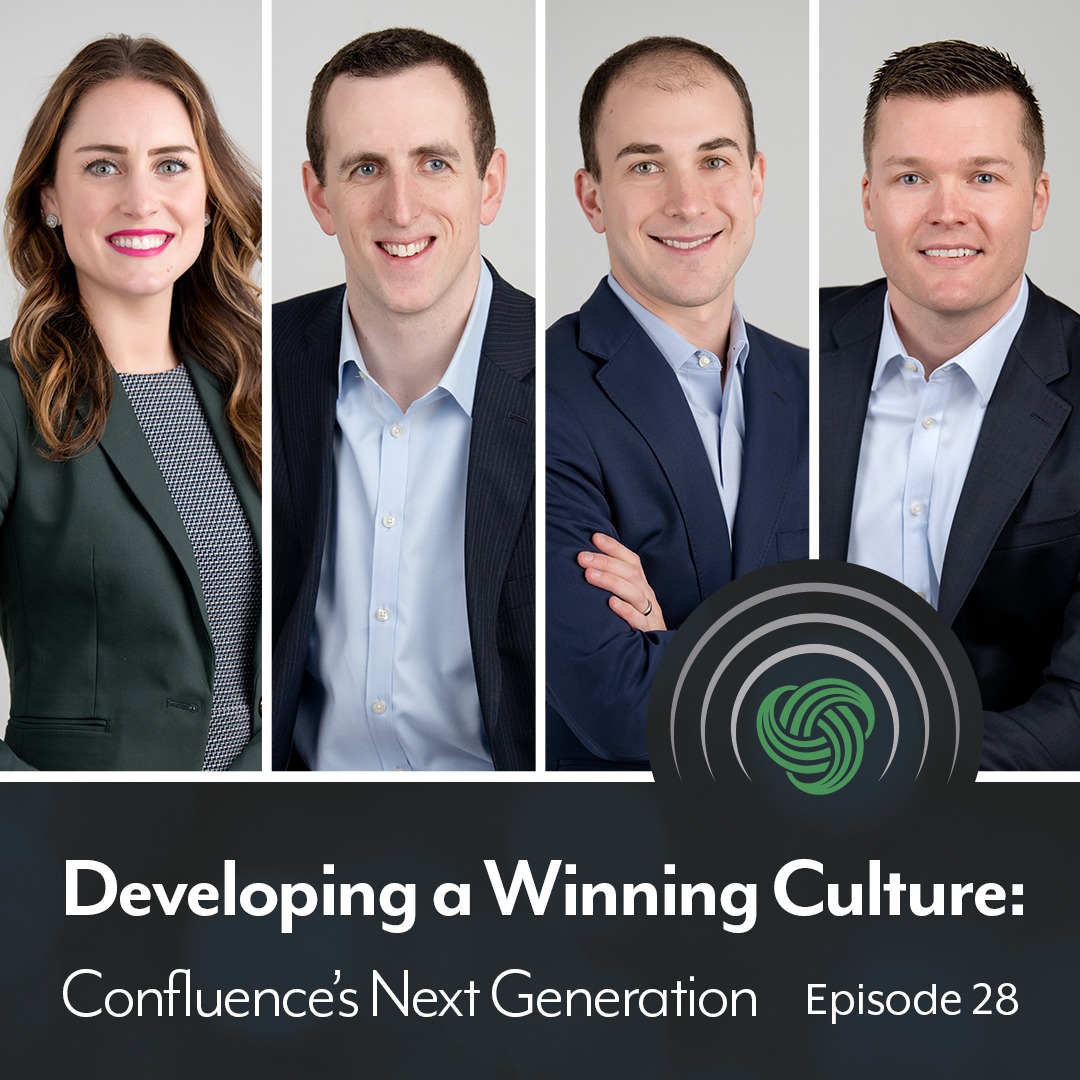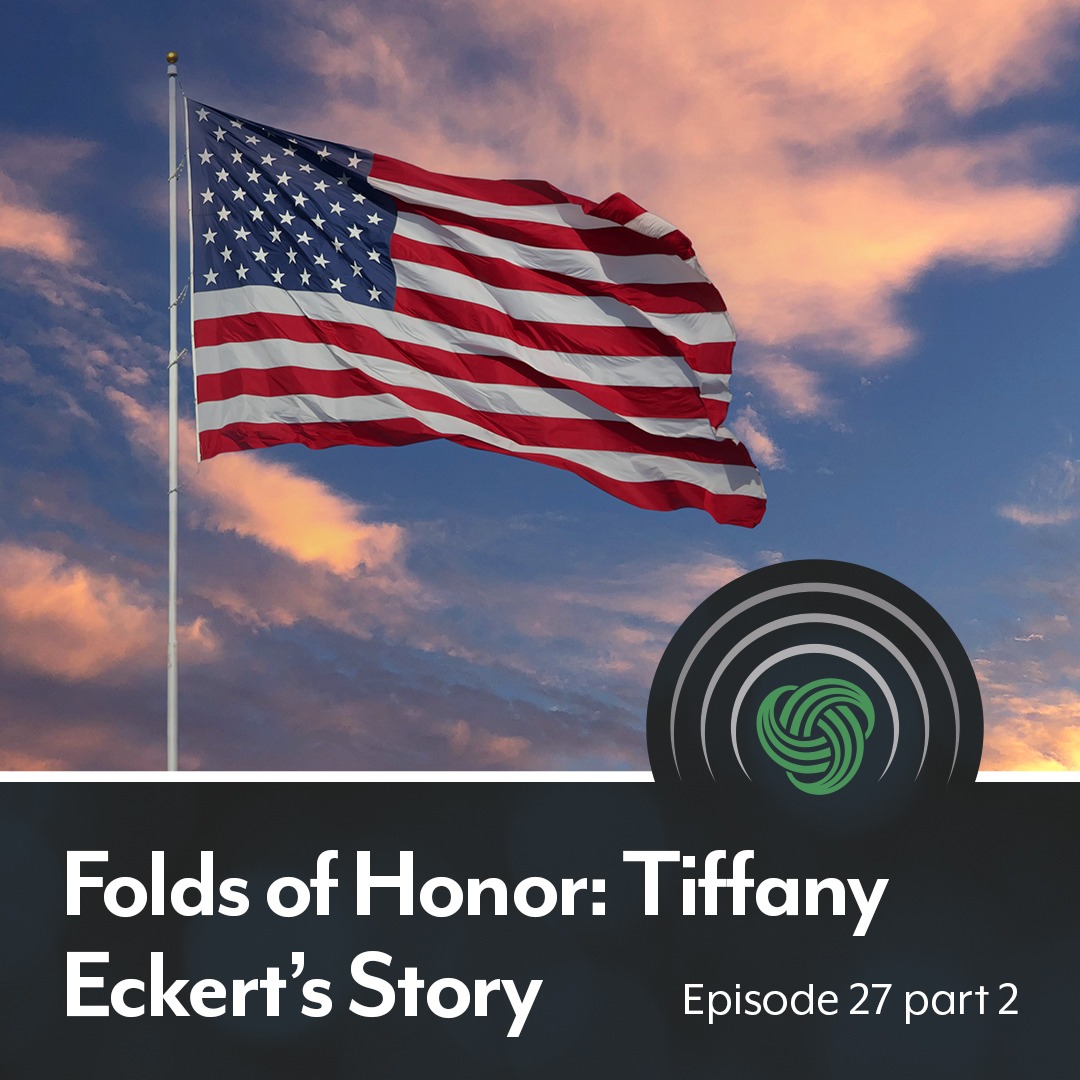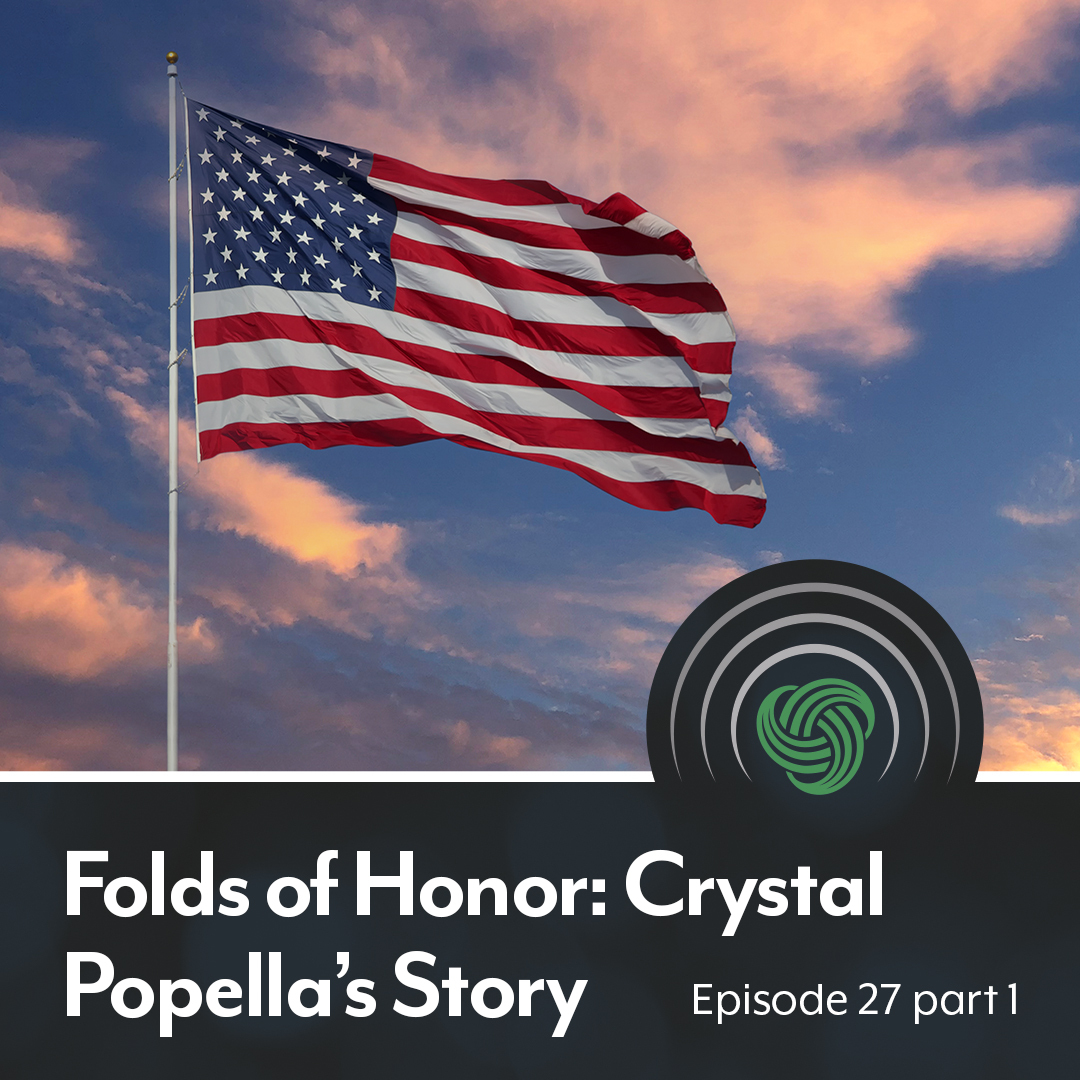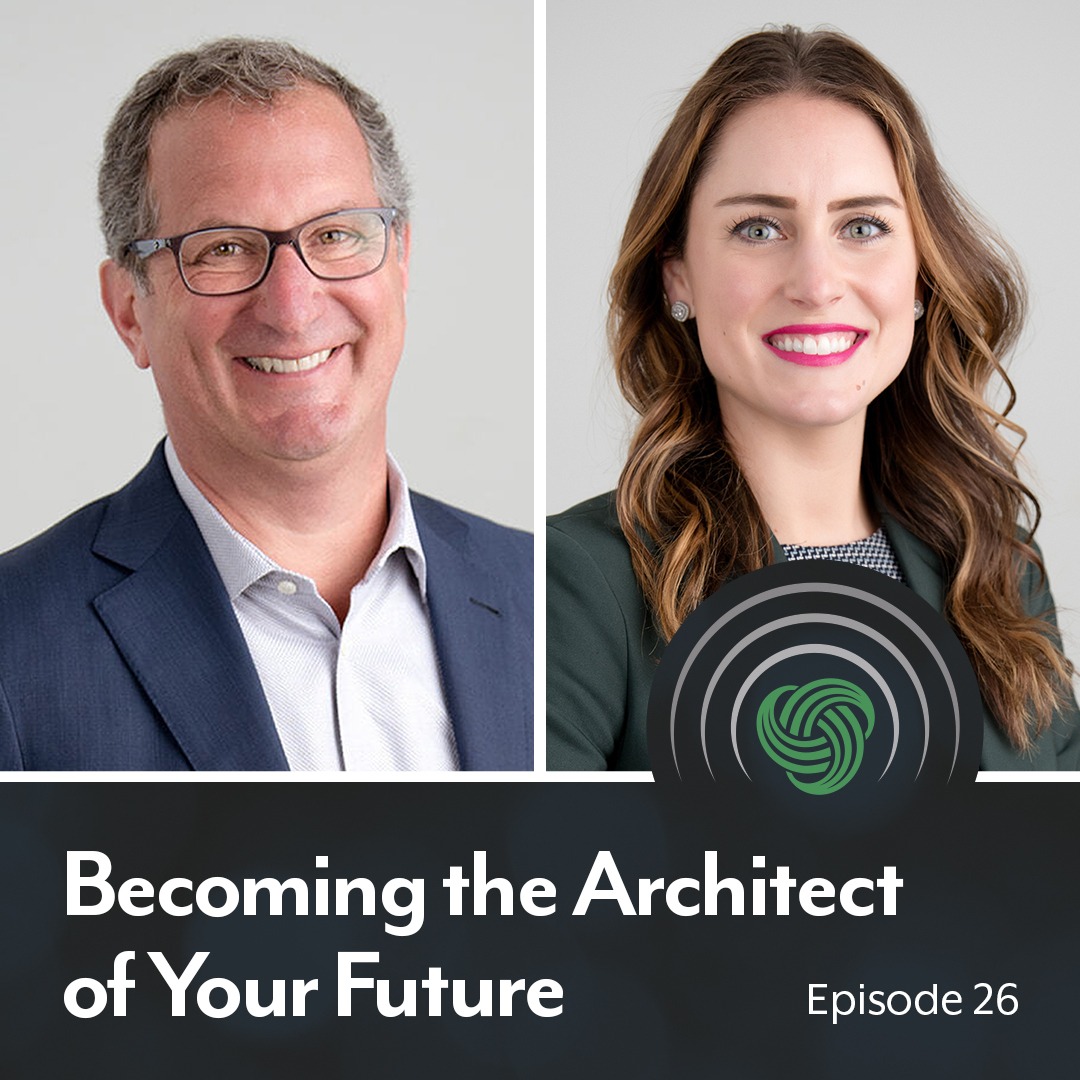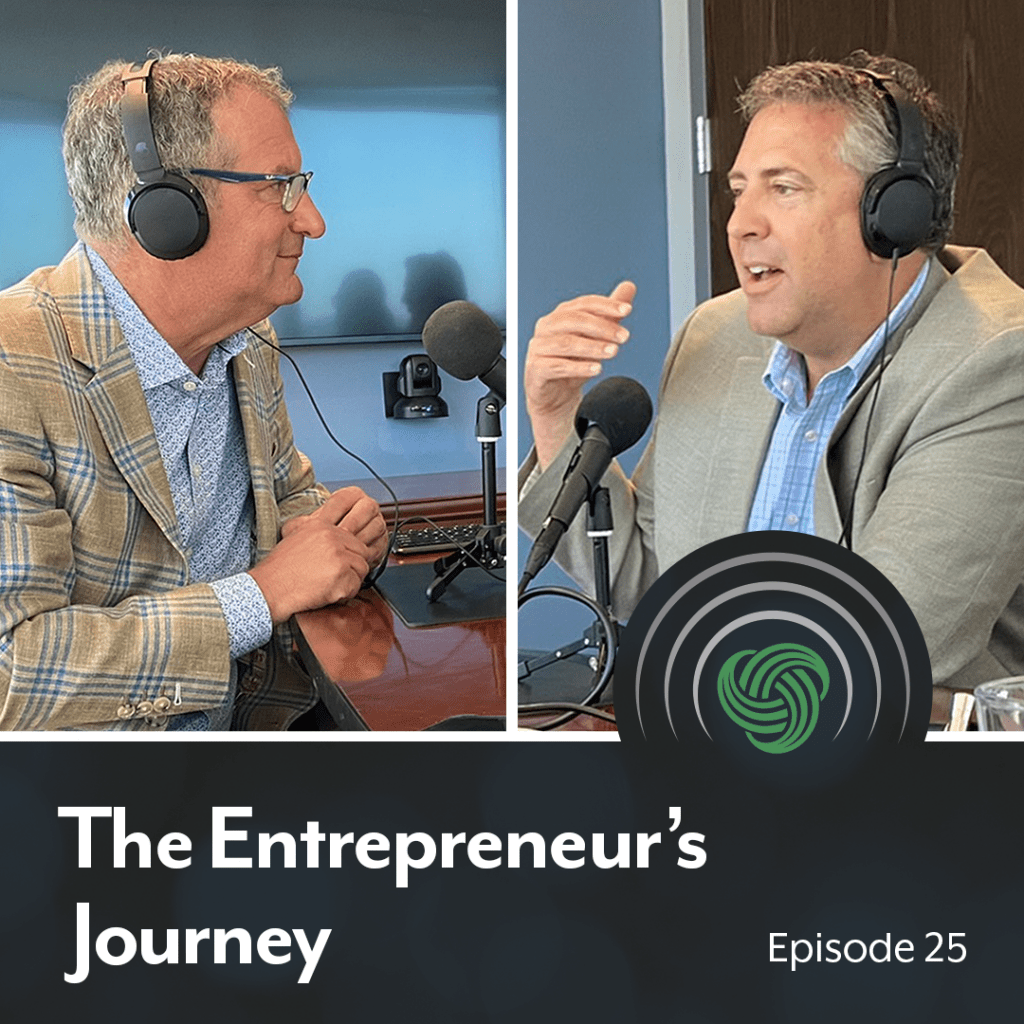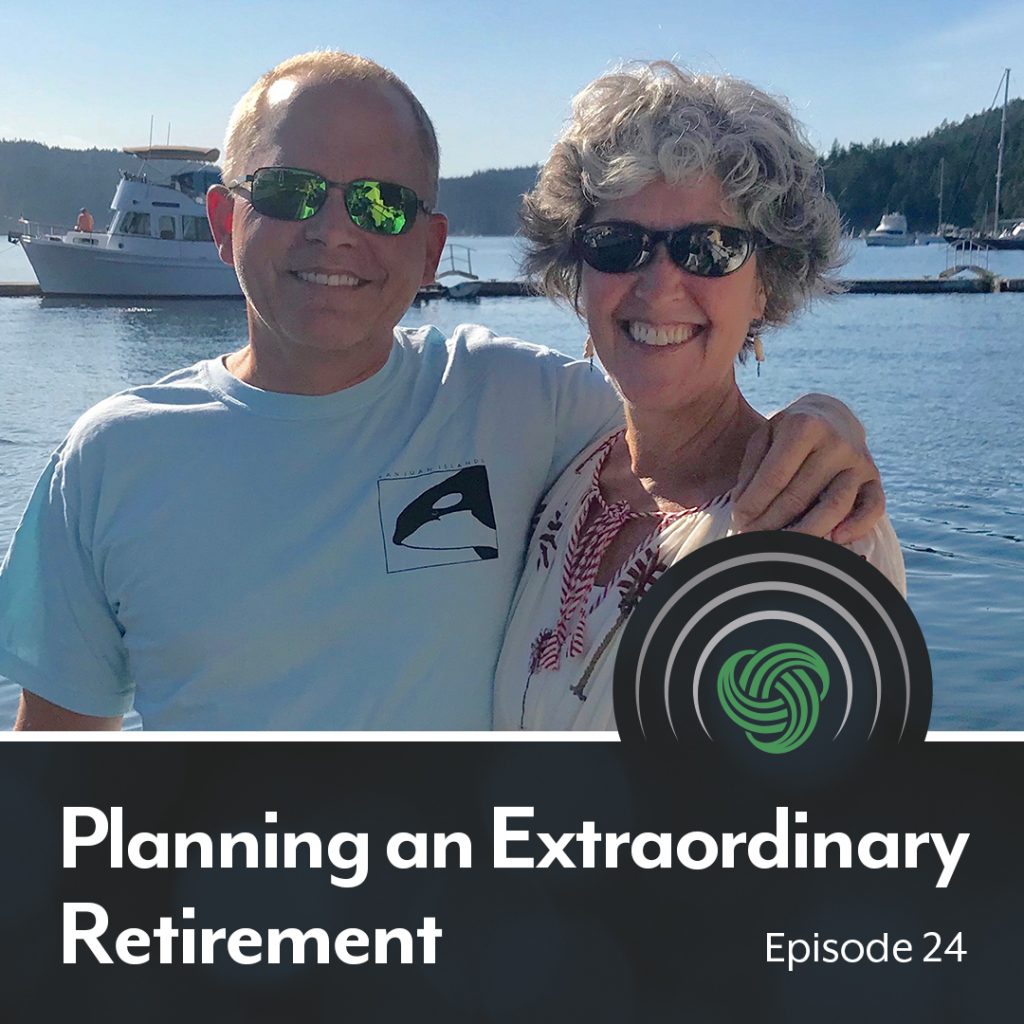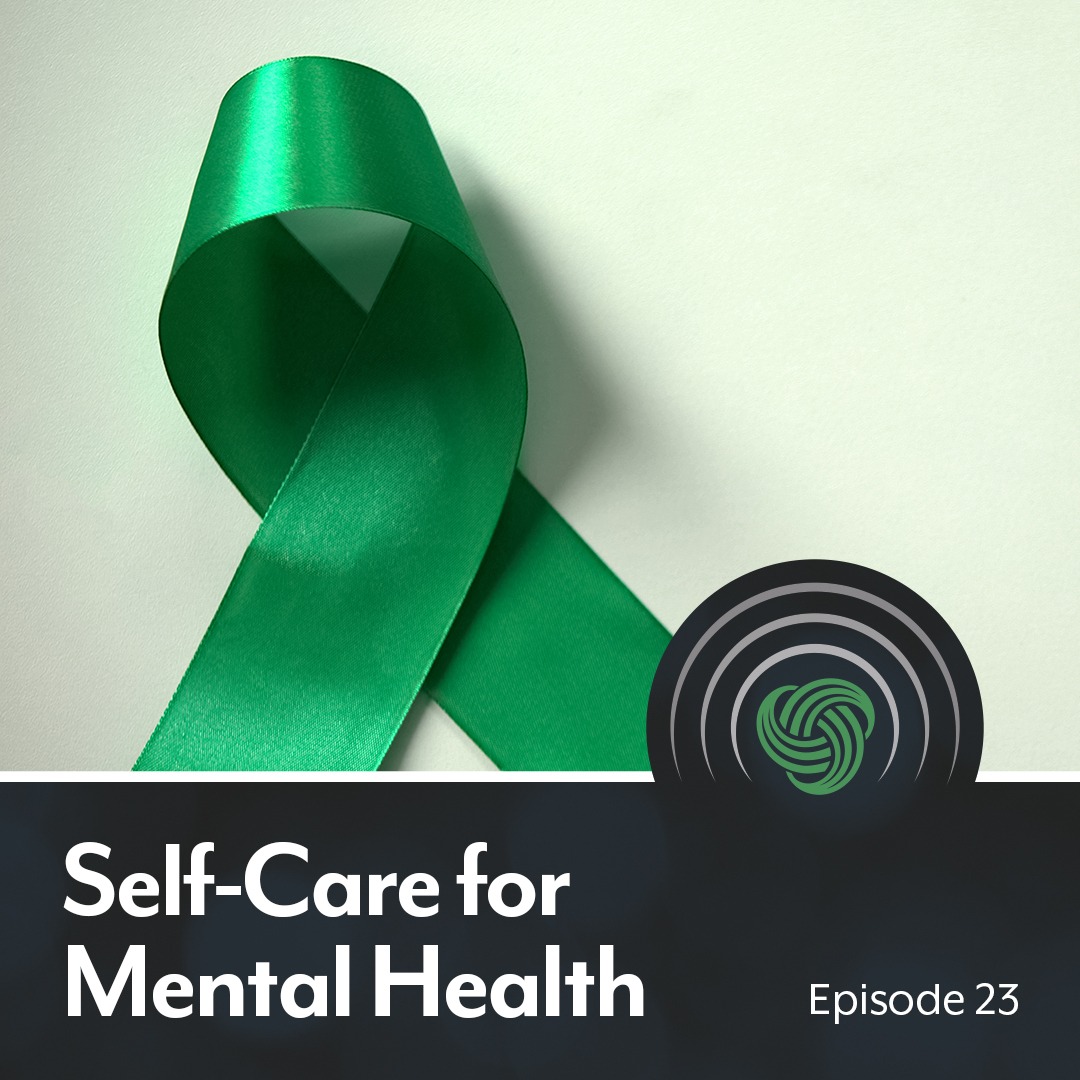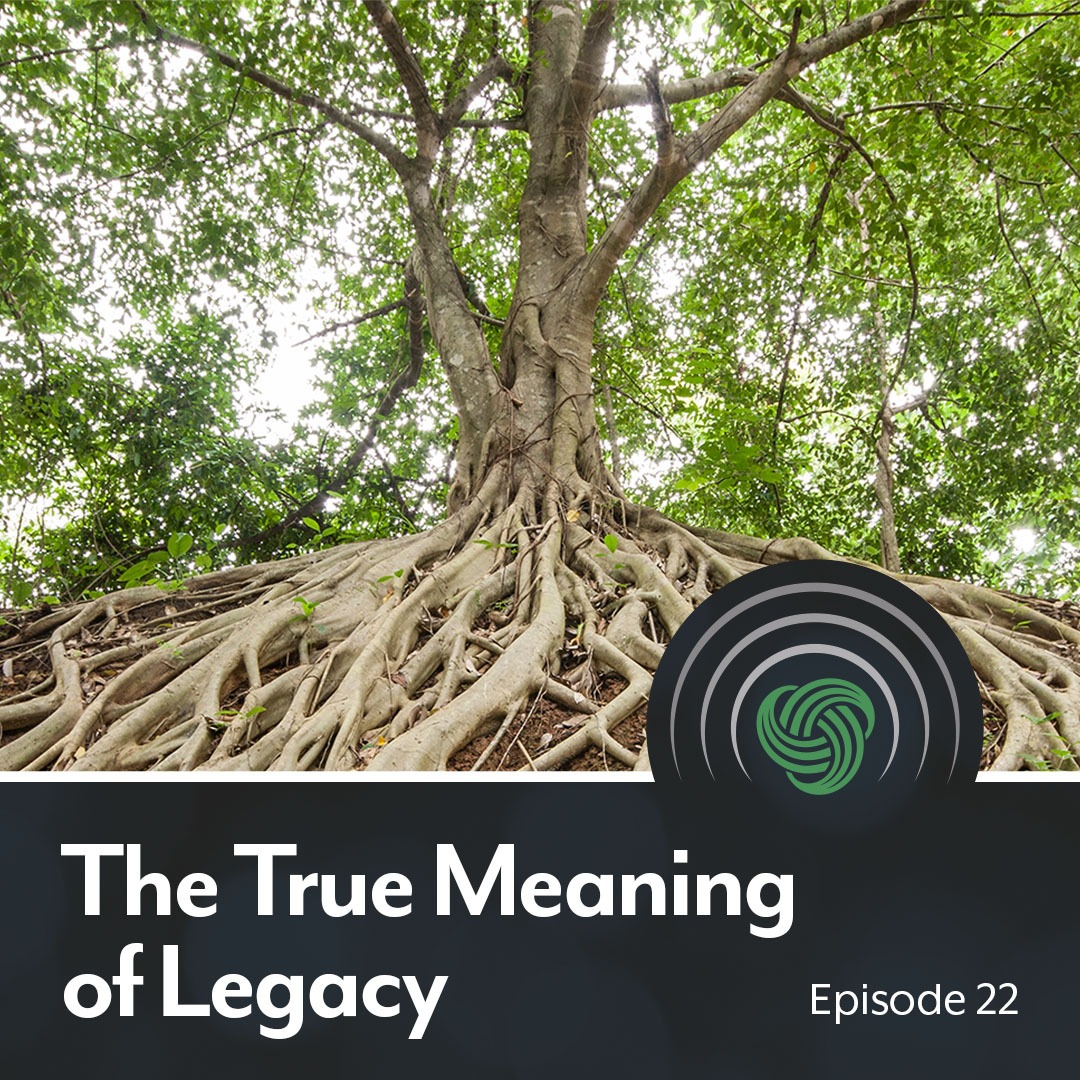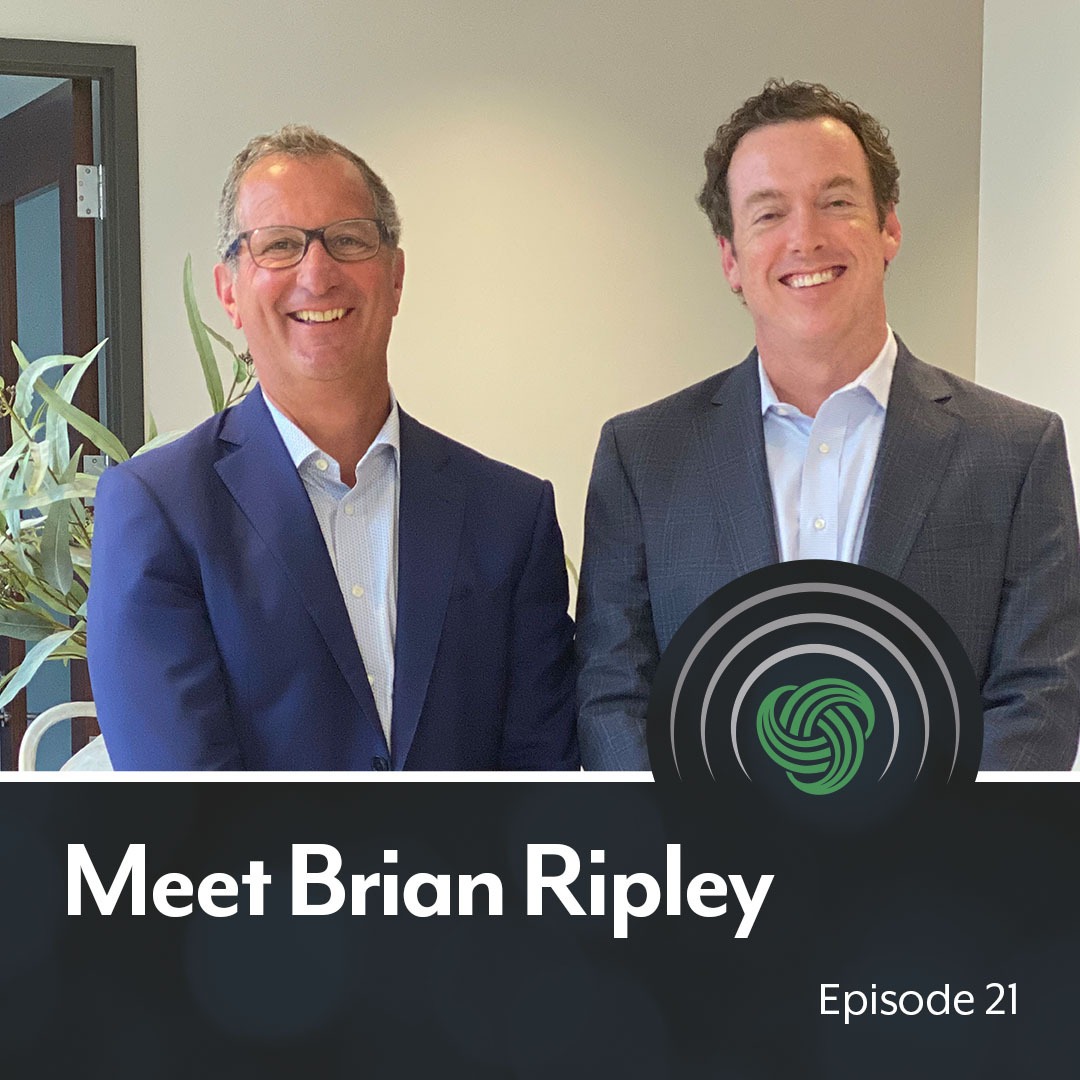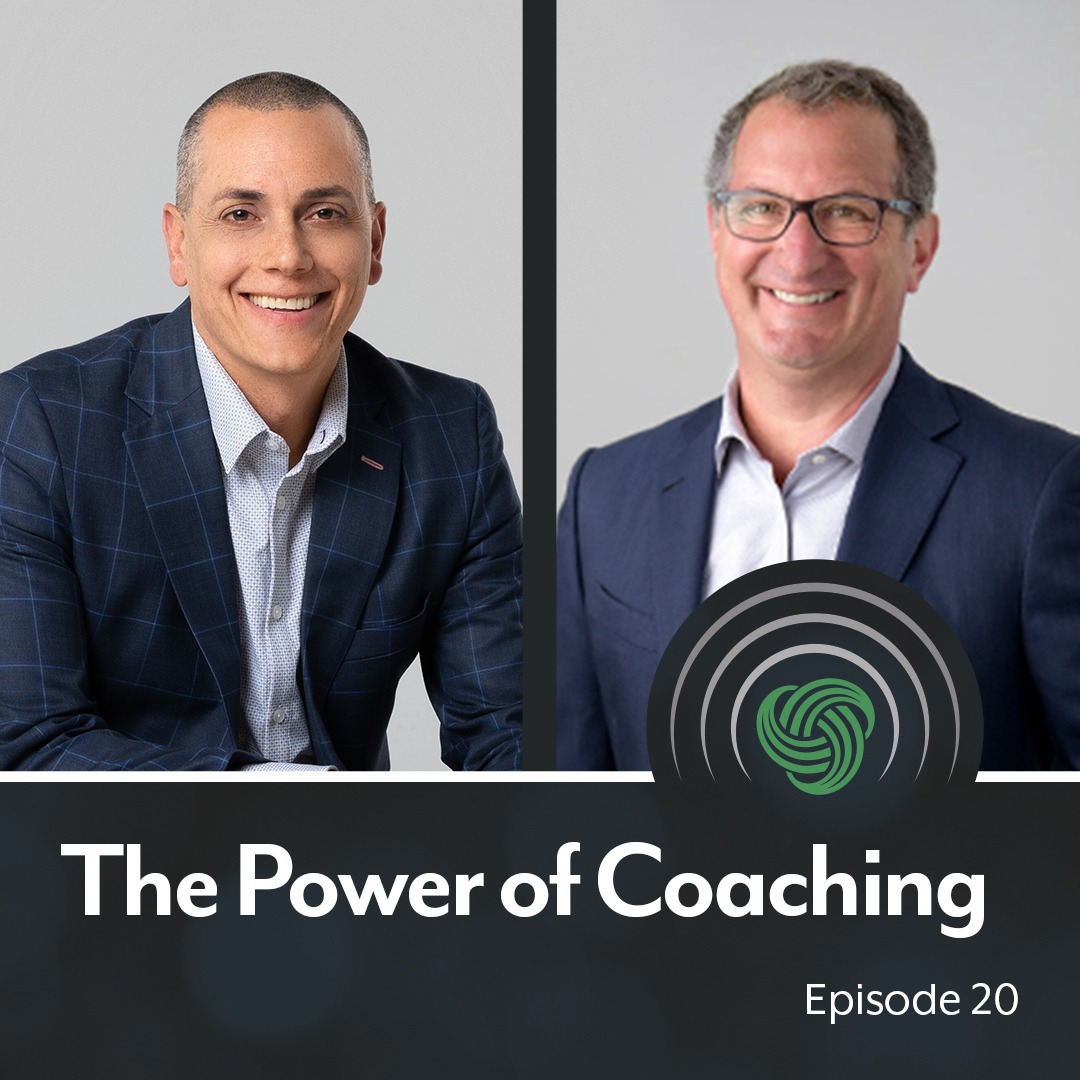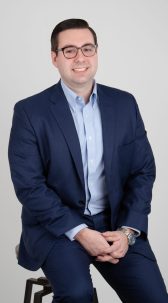
In August of 2019, Confluence CEO, Greg Weimer sat down with a few of the firm’s younger associates to get their perspectives on wealth management, workplace culture, and life. Since that time, much has changed.
In this episode, we catch up with those same professionals: Randall J. Holcombe, CFP®, Director of Wealth Planning; Katie Montagazzi, CFP®, Director of Marketing and Communication; Gregory Weimer II, CFP®, CEPA, Chief Operating Officer; and Chuck Ziants, CFP®, Wealth Manager.
Join us as explore how Confluence has evolved, examine some of the reasons behind the firm’s success, and look ahead as we continue to improve and innovate on behalf of our clients.
Greg:
Only 52% of millennials reported feeling empowered to drive change within their organizations. Of that 52%, 89% said they feel a sense of belonging with the organization. Imagine that.
(SOURCE: Deloitte, Striving for balance, advocating for change, 2022)
Hello and welcome to the Imagine That Podcast. I’m your host, Greg Weimer, founder, partner, and wealth manager at Confluence Financial Partners. Each month we’ll explore new ways to help you maximize your life and your legacy and meet some extraordinary people along the way. So, if you’re looking to get more out of your life today and legacy tomorrow, let’s get started.
Welcome. This is Greg Weimer with Confluence Financial Partners, and this will be an, this will be an interesting, this is like, take two. I don’t think we’ve done a 2.0 yet in our, in our podcast, so this will be fun. Some of you may remember that it was in 2019 we did a podcast with four of the millennials in our firm, and we talked about how to communicate with millennials. Well, the good news is I think we’re over that. We know how to communicate pretty well.
In fact, the millennials in our firm teach us how to communicate even better, and they’re very good at it. And every once in a while, we have to remind them talking to someone isn’t a text or an email. But other than that we’re, we’re over that. I think the opportunity today and the reason to listen to this podcast or, or, or one is just to give you, it’s been an interesting three and a half years.
So let’s give, let’s give the listeners a peek under the tent of Confluence Financial Partners. So just what’s going on here, What’s happened in the last three years? And then, two, you know, I mean, clients should demand, and I would think they want to know how we’re building this organization for the next 10, 20, 30, and 40, 50 years. So we’ll talk about that and let’s talk about like in the last three years, some of the things we’ve done as a team to build our organization for the future.
And then how do you build a team? Like, like what have we done to really make sure everybody has a great work-life balance but is still really driven and passionate and fired up when they come, listen to this, when they come into the office, which is, I think, a little bit different right now. And then we are planning/goal crazy in here. So let’s talk a little bit our pla— about our planning process. And maybe that’ll help some folks that are listening think about how to plan in their lives or in their businesses.
So first, we have four, the same four, the same team. It’s a, it’s a, it’s an encore presentation. We have our four millennials and I’m gonna have them introduce themselves, Not that I don’t know their names or, and all about their family and by their families have grown. These, these individuals in front of me have added four children in the last three years. So I guess that’s work-life balance. And but, but if you could go around and the reason this will be helpful also, it’ll help you attach their voices to their names. So the first one’s voice would be pretty easy to distinguish from the other three. So Katie, do you want to start?
Katie:
Sure. thanks Greg. My name is Katie Montagazzi. I am now the director of marketing communication here at Confluence. I’m a sort of a financial planner. And I wanted to add as well, there are more than just four millennials at Confluence.
Greg:
There’s a lot, right.
Katie:
After three years.
Greg:
Yep. Right.
Katie:
For the sake of this podcast.
Greg:
Right, right. And, and, and Katie is a CFP and Katie still works with clients. It’s really, and so she has a unique background in that. She’s, she’s, she certainly is in charge of our marketing communications, which is her passion, but she also knows a lot about our business and as a CFP and part of having a great team is you find, you get, you hire great people and then you put ’em where they, where, where you think they’re gonna be able to shine. So Katie has transitioned a little bit and expanded her responsibilities. Gregory?
Gregory:
So I am Gregory Weimer. I’m our Chief Operating Officer and also wealth manager here at Confluence now. In terms of designations, I’m a CPA, I’m a CFP like Katie, and I’m also a CEPA, so I’m a Certified Exit Planning Advisor, is what CEPA stands for.
Greg:
Yeah. And so we’ve, we’ve, we’ve been blessed to have several, many, bunch, like whatever clients that have benefited from that, right? That they exit their business and we help them with, with the exits. So, so that, that has been really helpful. You have that designation. You and I should probably do one is like, what’s, what’s it like working with your dad? Right? Cause—
Gregory:
That’s a whole ‘nother story.
Greg:
That’s, that’s another podcast. But yes, but everybody told me when we were about to do it, how hard it was gonna be. And it, I don’t know. You probably feel differently. I don’t think it’s been that tough.
Gregory:
So far, so good.
Greg:
So far so good. It’s been great. I mean, so, but it’s really important. And Gregory runs the day-to-day operations. So, cool.
Chuck:
Right. Good morning. My name’s Chuck Ziants. I’m a wealth manager at Confluence, and I hold a Certified Financial Planning designation.
Greg:
Yeah. And Chuck works on our team and, and works with a lot of our, a lot of our clients. And you and I have known each other longer than you’ve been here though, so it’s, it’s.
Chuck:
2013.
Greg:
Yeah. So it’s been really good. And, and I’ve never seen you without a lot of energy. And so like he, everybody’s nodding. He brings energy to the game. He works really well with our clients. Very detail oriented. When you go in with Chuck, meeting with Chuck, you, you just, you, you’re gonna know every single detail before you go in. Randall?
Randy:
Yep. I’m Randy Holcomb. I’m the director of our wealth planning department here at Confluence, and I’m also a Certified Financial Planner. Just carrying on the theme here.
Greg:
We hired Randy. I kept hearing there’s these good kids out at Grove City. So how many years ago was that? Eight. Eight years ago. So I went up to Grove City on one of the recruiting deals and, and Randy was one of the people we met. And you’ve done almost everything right? So if you don’t know who does this, it’s probably Randy. Not only does he do a lot of the financial planning, but, but he’s been incredibly helpful just with a lot of the transitions, a lot of the different things. So he’s sort of like the glue of the organization.
As a peek under the tent. Like, you know, it’s been three and a half years since, you know, we, we had one of these podcasts. If you could say the one thing in the last three and a half years that would surprise clients or you’d think clients would want to know about, For me, it, it feels the same. Like, it’s just all, it’s, it’s just all blur frankly. It’s just we keep going. Right. we don’t really slow down very often, but is there a moment that you think some of the listeners would be interested in?
Gregory:
Yeah, I’ll go first. I mean, I think when you look at the resources we’ve added over the last three years, and it’s hard to believe, it’s exciting for the next three years, but we’ve brought a lot of expertise in house. So, you know, we have 401K department and Brian, our 401k specialist in house. We have insurance now we have a director of investments with a CFA. So there’s a lot of hires we’ve added that to us probably feel gradual, but for a three-year period, it’s a lot. So I, I think that’s been awesome.
Greg:
Yeah. You know, you used the word, you said expertise and you said in-house. And, you know, we have a, we’ve always had a lot of expertise through our relationship with Raymond James. You know, they, they’re a custodian. We own ourselves, but they’re a custodian. But it is a blessing for us and for our clients to have the expertise down the hall, not in some office in a faraway land that’s at an 800 number, and you are totally vulnerable to the person that picks up the phone. So we, we, we have it in house. So we have it, we have a, we have a team of experts here. We keep adding to that expertise. I feel like we’re putting together a band and you just keep putting together great people and music happens. It’s what we’ve been doing. I couldn’t agree more. I think that has been, and that’s been way, it’s been fun. We we’re, we’re not adding expertise, we’re adding really good people. Anyone else?
Randy:
I think RIA has been huge for our business in terms of the things it’s allowed us to do. I know we’ve talked a lot about that with clients and communicated quite a bit about it. But just having the independence to build our business for our clients. And that’s, that’s the most important thing. I think that’s been huge.
Greg:
It, it is. If you, if you watch the flow of people, if you watch a flow of expertise, you know, the banks are the banks, that, that’s a different animal, a little bit. But people tend to, people from our industry don’t go to a bank, right? So, so when you watch the flow of people there, there’s great big national firms and there’s great people at those firms, and a lot of ’em around here are my friends, so not criticizing them in any way. But those people tend to go to what’s called independent. And then independent tends to go RIA. And so it, it, it does not go the other way. And we are now at the RIA stage, and we think for our clients, that’s, that’s been wildly beneficial. It’s the difference of having an iPhone versus a flip phone. We can put whatever technology and apps we need to together to make sure that we can customize the experience that we want our clients to have, not some person in a faraway land. So Randy, I couldn’t agree with — that’s been, that’s been really important behind the scenes that, that some people may not be aware of. But it’s been extraordinarily important if we’re trying to build a future to take care of our clients for the next 30 years.
Katie:
I have two things. One, not just adding resources and associates, but we’ve moved into a new building in the South Hills of Pittsburgh. Built a building, office. Moved into the PPG office downtown. And when, now we have an office in Naples. So logistically we’ve grown—
Greg:
By the way, by the way, two of the three were done during Covid. Right.
Katie:
Right. <Laugh> Not great timing, but it’s great now. And then second, I wanted to mention this past year we were nominated again as one of the Fastest 50 Growing Companies in Pittsburgh. And we were the fastest financial services firm in Pittsburgh last year. So growth has been the theme.
Greg:
Yeah. sometimes people say, Why is that good for our current clients? If you would see the resources and what we can do for clients today versus five years ago. It’s, it’s, it’s significantly better. So it certainly benefits new clients, obviously, and new associates, but our current associates and our current clients have benefited greatly from our growth. And by the way, you cannot keep talent and you cannot attract talent unless you’re growing. No one wants to work for an eroding organization.
Chuck:
And I really think that people would be shocked at how much we collaborate. And we really leaned into the challenges the last, you know, three, four years.
Greg:
Yeah. I was with some great clients yesterday and I said we probably do more business in the hallways than in the offices. <Laugh>, Right? I do laps around the office and we just get a lot done in the hallways. So Chuck, I agree that the collaboration’s been a big deal.
Chuck:
The five-minute drive-bys have been invaluable.
Greg:
Yeah. Yep. Fly-bys. Fly-bys. Is that what they are?
Chuck:
Mm-Hmm. <affirmative>.
Greg:
They’re fly-bys, Yeah.
Chuck:
Fly-bys.
Greg:
Yeah. And so we do a lot of those. So anyhow, that’s great. I mean, I think that’s a great peek under the tent. And I hope the listeners just, just really hear us say clearly that we are, we are working hard to build an organization that’ll be here for their families. I’m always amazed I said, Oh, here, here a prospective client. So I work with them. I’m like, Oh, right, Really? Why? And it’s like, one or two people, they’re 60 years old and they’re gonna take care of my family. And I’m like, just do the math. They’re not gonna take care. It’s like math. This isn’t an opinion. It’s like math. They’re not gonna take care of your family.
So the good thing about here is we have people in their twenties that are very talented. We have people in their thirties that are very talented, forties, fifties, and sixties. And so we, we will be here to take care of families. And we think it’s important that we have that diverse group. And also, it’s important that we stay private so clients can rely us, rely on us in the future. Let’s go to — I don’t know, I may be biased. I think we have an incredible team. I really do.
Not, not to make it all about Confluence, but, but more importantly, let’s take it, let’s talk about what do you think we’ve done as an organization that allow, has allowed us to build such a truly, and this is the correct word, driven team? And I honestly don’t know the answer, so I’m fascinated to hear.
Randy:
I think we’re pretty upfront at the, from, from the get-go of here’s what the expectation of is of a Confluence associate. I have the privilege of whenever we have a new hire that comes on, I get to do the brief history of Confluence and welcome to Confluence presentation. And one of the things we talk about is the culture of goal setting, of improvement, and how we truly believe that individuals are at their best and happiest, and it’s best for our clients, if we’re constantly improving. And so the expectation is we’re gonna do a five-year plan, we’re gonna do quarterly goals, and it’s gonna be part of our DNA. And I think we end up because of that, we end up attracting people who want that, that excites them.
Greg:
So be upfront and honest with what you’re trying to— when you’re hiring someone. I mean, my wife and I started dating, I don’t know, 35 years ago, and I said, Hey, here’s what I want out of life. What do you want out of life? Let’s save each other a bunch of time. So we compared notes, matched up. Good. So if, if you, so if someone wants to say like, Hey, I’m here to coast, that’s great. But there’s a great firm for you — it will not be Confluence Financial Partners. Right? So I think that’s a good point, Randy, just, and thank you for doing that. We, we are very upfront if we’re, we’re, we’re about improvement. What else?
Gregory:
And I think even taking that a step further, it’s become part of the interview process also, right? I mean, we’re, we’re talking to people during interviews about: how can we help them succeed? And, you know, being driven, being goal oriented is part of it. And we want to it to be the right fit for potential employees too. So if they’re someone who wants to come in and just check the boxes, they realize it may not be a great fit also.
Greg:
I think that’s right. Yep. I think that’s, I think that’s fair.
Katie:
So Gregory and Randy mentioned about getting the right people on the bus, as we always say. But I think once you’re, if you’re an associate of Confluence, you also, you don’t just join the organization with that growth mindset or goal-setting aspiration, but we all hold each other very accountable. If somebody’s kind of like falling behind, nobody has an issue saying like, Hey, what’s going on? Like, let’s get it together. So I think all of us do a really good job of actually being a team and carrying everybody along with us on the journey.
Greg:
Yeah. And, and it is a team. I mean, and it is accountable, but it’s weird. Like not, it’s, it’s not like, you know, it’s not like in a principal way, it’s just that we, we have a standard and we create it and everybody works really, really hard to live up to it. And as I look around the room, I think I’ve texted every one of you at nine o’clock at night. I’ve texted every one of you at five o’clock in the morning. And I know that sounds crazy, but you know, you don’t always need to respond. But, you know, it gets, and we communicate that way. And it’s, it’s really amazing, you know, the communication and accountability and idea sharing. I remember this was probably 40 days ago, there was a, there was an idea that came out of our Pittsburgh office, our downtown office, and I thought it was something we needed to move quickly on. And I texted Randy and Gregory and said, How quickly can we get this done? And what do we need to do, get to get it done in the next 30 days? It was amazing how quickly you guys moved. You did it in 31, which was okay, but it was, but, but <laugh> But it was good. I mean, we moved, right? And so it’s just how we, it’s just how the organization is.
Chuck:
And I think too, I think the, the big thing is, is the leadership here in everyone here takes a vested interest of your success in the office and out of the office. Like that’s one thing that I’ve taken away over the years is, is they care about what you’re doing in the office and outside, which is great. They, we all take a vested interest in each one of our families. It’s great.
Greg:
Yeah. It’s, it’s not, that’s— Thank you for pointing that out, because it could make it sound like it’s all about just work, work, work. And it’s not true. I mean, balance is, if you need to be home for your, for your family, you should be home. If you need to be in the office for your office, for the firm, you should be in the office. But that’s, that’s true balance. So we do look at it as a group of families. In fact, in fact, that just reinforces the whole, we don’t do, we don’t work. And this is just how we live our lives, right? We don’t work and we don’t play. We just live. And I think that’s a, that’s different than how most people think. There’s a lot of conversation out there about people not wanting to come back into the office. Not at Confluence, but there’s a lot of conversation out there about people not wanting to come into the office. And you know, you guys are like looking at me, you know, but it’s like, that’s just not — did you want to come in, why’d you come in? Has it made us better with you being in here?
Gregory:
Yes and yes.
Katie:
We’ve been back in the office since — help me — spring of — no, winter 2021.
Gregory:
We went through phases.
Greg:
Right, right, right. We were very, Yeah, right. We—
Katie:
We were—
Greg:
I mean like, like, you know, when there was a sharp spike, we’d be like, okay, we, everybody’s got to get, or even in the office, right? We had a couple breaks and, and so we’re like, okay, let’s, let’s get out of this office and away from each other’s germs for a week or two. And then at first we did, right, for a month or something like that. But yeah, so, but I was— But you’re making, go ahead.
Katie:
Yeah. So there was a common theme when we were home working, you know, we were working, but I would call like Chuck, I would call Neil. I would call Gregory just to say hey, because I missed seeing them and just collaborating, whether it be personal or professional. And then coming back in the office, it was like a breath of fresh air. Being home was cool for a little while and then it was like, wow, I really, I feel like we were missing something. And we got back in the office, we were able to collaborate better, circle around the client, do meetings. There were just so many things we were missing out on being home. So I think we can all agree that we were excited to come back. And then I just wanted to add too, still to this day, it happened to me last week, somebody said, Oh, are you guys back in the office? <Laugh>? And I wanted to laugh. I’m like, Well, what have you been doing? Right? Yeah, we’ve been back. It’s been great. Yeah, we’re, you know, it’s, nobody’s had any big issues or anything. Right. So it is interesting. I think we’re kind of the minority in the world.
Greg:
Of, and at the same time, and this is true of the fathers also, but as a mother of two young boys, there are moments that it is very convenient and necessary that you work from home.
Katie:
Yep.
Greg:
And that’s okay.
Katie:
Okay. Yes, with children, there’s never a dull moment. I’ll say that. <Laugh>
Katie:
But no, it’s great. Yeah. I mean, all of us, I can speak to all of us. We all, you know, if you have something that’s going on at home in your personal life, you are more than welcome to do what you need to do. And whenever it’s time to work and be here, we’re here.
Gregory:
Yeah. Our business is also about relationships, right? So for us, we want to sit across the table from our clients and I think we miss that. It’s nice using Zoom or Teams, whatever you’re using for a virtual meeting. But, you know, at some point it’s nice to look at someone in the eyes in the same room. And after a while I miss that. It’s nice to still have the tool, but that’s a big part of our job.
Greg:
It is. And, and I, I, I would think the clients are listening. I would think you expect us to be in the office. It’s amazing how many people aren’t, but it’s, I would think you expect us to be in the office and we, look, we, we, Zoom has been great. We have clients 42 states, so we need to use Zoom from time to time. And that works great. But you, you, but it’s, it, it, it is nice to see people face to face.
So we actually are in the process of now I know this is this, by the time, hopefully this is by the time this is out, hopefully these meetings will be accomplished. But we have a challenge in here. We want to meet with, we want to do a thousand interactions with our clients. A thousand face-to-face meetings, a thousand Zoom for the people that are out of town. And because we know this is a tough time, we know this is, to Gregory’s point, we know this is a relationship business and we are gonna put that goal out there and say engage, engage with the clients. Let’s make sure that we are out there communicating with our clients in this difficult time.
Chuck:
Moral of the story with that plug, let’s meet.
Greg:
Let’s meet <laugh>, Let’s meet, let’s meet. Yeah.
Katie:
Oh, I was just gonna add something. Doing marketing and communication internally at Confluence, a lot of my, so like clients I would say are advisors, Confluence advisors. So being in the office, the most effective communication happens whenever you’re in the office, belly to belly, eyeball to eyeball, phone calls are great, email’s, great, whatever. But to be physically in the same room as somebody is the most effective way we communicate, I would say.
Greg:
Couldn’t agree more. And there are people out there I’m sure that are saying, Yeah, but we are just as effective outside the office. We are not judging you. You may be in a different business than the wealth management business. Frankly, when we were out of the office for a little bit, we were just as productive also. But it was because of the relationships we built when we were in the office. So what I would challenge people to think about is when you fast forward to 20 years, if you’re not in the office, will you have those same relationships that if you’re forced to go outside the office, that you’ll still be productive? We are benefiting from the relationships we’ve built. When we stop building those and we have to go remote, I would, I would challenge the thought that would be that be that productive. And I think for the, the, this, this is, this is an old guy dad advice, if you’re 30 something, get in the office because you need to be around other people to learn from the mentors. We were with a partner of a law firm that will remain nameless in Pittsburgh and you know, he’s okay. I mean, he is, he’s, you know, close to retirement. But man, if I were a new attorney, I would want to be next to this attorney because he’ll just make you better over time.
Chuck:
Iron sharpens iron.
Greg:
So earlier you all, you said we’re, we’re about goal oriented and we do think a lot about goals. And we do think, and, and you know, as I was saying it, we’re in the planning business, I would hope we think a lot about goals, it’s what we do. I’ll run into financial advisor, say what are your goals? Like, Oh, I don’t have any goals. I’m like, you’re in the goal business for goodness’ sake! Like how don’t you have any goals? You know, I’m just gonna try better. Well that’s cute, but like goals help. Or you just, you know, so— I think it’d be interesting for folks to, you know, from a planning standpoint, maybe, maybe this converts into some listeners lives. Could you talk a little bit about, when you say we’re goal oriented, when you, you know, when, when you, when you say we’re very, you know, intentional about what we do, do you want to just give a couple bullet points about what that means inside of Confluence?
Gregory:
I’ll start at the firm level because I think it’s, it’s individual and from a business standpoint. So we, we start and we’re very open about what Confluence’s five-year plan is and what the goals are each of those years to get there. So we start with the five-year plan. We know where we want to be high level in five years, but then we break that down on how we’re going to get there. And I think what helps our associates is we’re open about that. And so everyone feels like they’re part of the growth and they can make their own goals to build on that. So, you know, whatever the planning department needs to do or retirement plan services, everyone’s a part of the same goal and rowing in the same direction.
Katie:
I was just gonna add in the last three years we’ve added directors of all of our different teams and within those five-year plans there’s, you know, the Confluence five-year plan and then we all have our responsibilities. Like what’s Katie owning? What’s Gregory owning? And then that filters down into our five-year, one-year, quarterly, daily tasks. So I think Greg, you always say people like 10 years from now or like, how did I get here? Well it’s probably because you didn’t plan <laugh>, so you just ended up wherever you ended up.
Greg:
Right.
Katie:
So we understand that and we’re being very intentional with not just business, but professional, professional things, personal things. I don’t know, it’s just the way to do it.
Greg:
Yeah. So, so just to play on both of us and to bring ’em together, I mean, they’re all part of the same process. You know, Greg, we, we get together and, you know, at the firm level and we, we think about, okay, so here’s where we want to be in five years and we work backwards on it. Okay, so what do we have to do to get there? And so that’s quantitatively that’s, that’s, that’s qualitatively like what do we need to do to get there? And, and it’s, it’s the plan. And then we show it to all of our directors and then the directors put together their plan. And then we show it to the advisors. Then the advisors put together their plan. So, so we absolutely have a five-year plan. And, and by the way, the five-year plan is about how do we improve the experience to our clients? And so when we add this expertise and we add these services, it’s not happenstance. I mean it’s something we’ve, we’ve absolutely thought about because we’re saying, okay, if we were a client, what would we want in five years? What would we want and demand this firm to look like? And that’s how we work on our five-year plan.
Randy:
Like Katie said, to go a little more into it, you take the five-year plan and then you say, What do I need to get done in the next year, next two years? You know? And then from there you say, what about this quarter? What do I need to do in the next 90 days? What are the high-impact activities? And then boil it down even further. What do I need to do today to accomplish this quarterly goal? And you know, we have a culture at Confluence around that. And we, it’s not just something you talk about, there’s templates for your quarterly goals. There’s, there’s templates for, you know, plan tomorrow today for your daily tasks. And I think most of us use those things and that’s a big part of our DNA and it shows, you always say, Greg, it’s amazing how often you write something down and then it happens.
Greg:
It happens.
Chuck:
It’s about identifying the big rocks, right?
Gregory:
It’s amazing when you actually accomplish goals too, right? That helps. So you continue to plan and want to plan. When we’re at the end of this year, when you look back at 2022, the rocks we had, the big goals, they’re all accomplished. And we set out a goal to accomplish them and we did. And whether that’s bringing in an in-house insurance specialist, whether that’s adding new technology, we’ve done it for this year. And so the buy-in is there. It’s not just words on a piece of paper that we hope we can accomplish.
Greg:
At one point, the, it would’ve been adding the, the, the investment, someone to run the investment group. At one point it had been a South Hills office. At one point it would’ve been launching Naples. At one point it would’ve been, you know, becoming an RIA. And these things are all critical, but they were, they, they existed because they’re all quarterly goals. And, and by the way, I think the other thing that’s important is it also allows you not to try to do too much at one time, right? Because you break things out and say, okay, this is all great. If we try to get it done all this quarter, nothing will happen. If we do it over the next year, we’re gonna get, so we’ll move faster by moving slower.
Chuck:
I mean, what do you all say if we do three really good things a quarter in five years.
Greg:
Boom, game changer.
Chuck:
People are gonna call us lucky, right?
Greg:
Yeah. Actually if you do, like, and then with the other one, right? If you do your most important thing every day, just do your one most. I call it my “no matter what.” No matter what, I got to do this, no matter what. I got to like, call this person, you know, meet with this person no matter what. If you do your “no matter what” every day and every day you do your “no matter what,” that’s aligned with your five-year goal.
Katie:
Yeah. We never really do it in a vacuum either. So whenever working through our quarterly goals, we’ll share it with the team. And again, if your goals are not maybe the best of your ability, somebody will call you out and say, Hey, you’re probably gonna do that anyhow, so why don’t you think bigger?
Greg:
Yeah. That’s called like breathing oxygen. That’s just living, that’s not like changing the world.
Katie:
Yeah. Some, sometimes people think tasks are goals and they’re not.
Gregory:
You have to have personal goals too, right? We we’re talking about the job and work, but we do a lot of things within Confluence to help people personally. So whether it’s a fitness challenge that we’re doing the fourth quarter of this year or earlier this year, doing a wellness challenge that isn’t only fitness, maybe it’s reading a book or a spiritual ga— whatever it is. There’s a lot of personal goals too that we have and we help associates accomplish.
Greg:
Yeah. So the one right now, so they, it’s, it’s, it’s around health and the winner is served dinner by the losers, but—
Katie:
Of their choice.
Greg:
Of their choice. Yeah. So, so if it’s someone that, you know, maybe if it’s one of our single individuals, you know, they may have some of their friends over and have steaks and beer, you know, whatever steaks and wine, whatever they want to do. If it’s if it’s someone that says, Hey, I just want to have a candlelit dinner with my, with my spouse. So then the, and then the other, the losers have to serve that. There’s only 15 or 20 people in this one, right?
Gregory:
Yeah.
Greg:
So the losers have to serve the winner. So that’ll, that’ll be fine. And they cannot get it catered. They have to, they have to, they have to make the dinner. So that’ll be fun.
Katie:
Then coming full circle, you mentioned the beginning of the podcast, Chuck is very detail oriented.
Greg:
Yeah.
Katie:
So Chuck is super serious about this contest and he’s sitting at this table with a gallon of water that he’s supposed to consume on a daily basis.
Gregory:
How many ounces? How big is that?
Chuck:
Gallon. One hundred and twenty-eight ounces.
Greg:
So he’s been running to the restroom so often his productivity is plummeting. So, so, but it is fun to challenge each other and I think it’s part of the team, right? It’s so it is also interesting when people say like, how, how’s everyone, so, like how as, you know, one of the leaders of the organization, how do you keep everyone so motivated? And I think it’s such a funny question because I don’t. Like, like I think what’s interesting about our team is: they keep each other motivated. Like it’s, it’s a team. And so everybody has a standard that they hold each other to the standard and you know, you just hire the right people and that, that’s very, very helpful.
Randy:
It’s the power of a culture. It can— pushes everybody forward.
Greg:
It’s everything. And by the way, I don’t know how you do a culture if no one’s in the office. I know you can do an activity every quarter, I guess that’s cool. But I don’t know how you do a, I don’t know how you do that, right? So are we have, we have a culture because we’re together, we say we’re a culture of improvement and growth. And if I’m listening to this, I’m, and I’m a potential associate, which we’re, we’re, we’re always looking for great people, I think the most important thing I do in my career is, is, is attract and retain good people. I mean that’s, that’s like what I really focus on. That’s one of the things I really focus on. So, you know, we’re trying to make all of us the best versions of ourselves.
It’s been three and a half years since we did the first podcast. What do you think the skill set, the thing you learned that, what benefited you the most? How are you different today? However you want to answer it.
Randy:
I’ll start. So for me it’s the ability to specialize more and more. So when I started, I think that was what the sixth person at Confluence. And so I did a little bit of everything and I, I still do a little bit of everything. I’m involved in a lot of areas, but now, being the director of wealth planning, as we’ve grown, we’ve been able to specialize in more areas and, and get people doing more of what they’re best at. And put everybody in position to win. And that’s been, that’s been phenomenal. I know I’ve enjoyed that, motivates me. And I, I’ve seen it all around the organization as we continue to grow.
Greg:
It’s so cool to be able to, it’s so cool to be able to do more of less, right? I mean, and, and, and Randy with the financial plans, I mean you work with all the financial advisors. So the, the, you see way more than the typical financial advisor. So, so you just, you know, you have different expertise than someone that would do it twice a week.
Randy:
I would say mine would probably be two. I would say one would be getting the CFP, Certified Financial Planner. That was right around Covid time, which was a challenge to say the least. As most of you know. I would—
Greg:
You were about to take the exam, then they canceled the exam.
Randy:
They canceled it. <Laugh> The day before.
Greg:
Stress.
Randy:
I actually was considering I was calling all the testing centers down the East coast. I was about to drive to Texas to take it. Ended up closing them, pushing it about six months back. So that was fun. I would say the second thing would be joining the Weimer-Wilding team and watching us continue to move and grow and break the process. That’s been invaluable to my career. And for those of you listening that don’t know, I was a solo practitioner when I started. And I would’ve made that decision to join the Weimer-Wilding team, 10 out of 10 times. It’s been awesome.
Greg:
And you know, it’s as far as expertise, we hired a consultant and this consultant said, Hey, how about this? And you know, we’re like, Oh, never thought of that. Now, you know, we, we have a lot of teams in the organization, the Weimer-Wilding team being one of ’em. And there is a real advantage of being a team and, and you know, everyone’s benefited, right? I mean, from that, from the team, everyone. And so we’re thankful you’re on it.
Gregory:
I don’t think last time we did this, I had been around very long, so, you know, I was working with clients, doing a little bit of everything with the CEPA background. I was still working on our finances. But with the growth of the organization, I think for me the biggest thing has just been, you know, actually taking on the COO responsibility. And now, whereas before it was a little, a little bit of, hey, run this project and make it happen. And I’ve done a lot of those, but now it’s, you’re responsible for making it happen. And I love that. I mean it’s, I’m working on the finances, whether it’s our internal accounting, our billing, I’m working on interviews, I’m working with our operations and our support associates and I still get to work with clients. So for me, the day to day is always changing and that, that’s been a huge change since three and a half years ago. And then there’s been additional designations. There’s been a kid added, so it it’s been a crazy three years.
Greg:
The difference, the difference three years makes. Yeah, right. But, but to get all that done, I know his wife fairly well. <Laugh> and Nick will say, she’ll say like, You’re on your computer, it’s at nine o’clock at night. And I don’t, I mean, I know you are. I am too. And what’s interesting is they’re probably not that different than you guys either, right? So, but that’s a lot, that’s a lot to do. Yeah, big change. I mean, I remember when you started, actually, I remember saying to you, you were, he, he was working at EY and he said, I think, I think I’m, I think I want, I think I want to come to Confluence. And I, I thought, okay, we weren’t that big back then, remember? And I, I thought, I don’t know what the hell you’d do <laugh>. Like—
Gregory:
I didn’t know either.
Greg:
But like now I don’t know what the hell we would do without you. So that’s great.
Katie:
Alright, I think, Greg, you touched on this at the beginning, but I’ve had two children in the last three years. So, one, personally, I mean that’s great family growing and second, I think we’re all parents in this room, but I think being a parent really changes your view and makes you better professionally too because your “why” becomes bigger. So that’s been a big change. And I will add, I had my first son Louie in May of 2020. So was working from home, had a child, maternity leave, back to work, but it was work from home. So that, just living life in the last three years has been—
Greg:
Yeah. Yeah. You said it made your “why” bigger and people, I mean I think everyone knows about the — we talk about that a lot, right? Whether it’s with clients, or your why, or the firm’s why, or maximize lives and legacies. You want to just touch on like what we mean when we say what you’re all about, all about, and how that is a little different and what that means to you.
Randy:
You’re all—
Greg:
I asked like 17 questions at once, but I think they’re all the same, right? It’s good. Yeah.
Randy:
The key with the, what’s you’re all about is it’s bigger than you might think initially. So sometimes people think of goal, they think, Oh, when do I want to retire? You know, when do I want to buy second home? Or whatever it is. And those are important, but the, what’s it all about is bigger. Like what drives you, what motivates you? When, when all is said and done in your life, what do you want people to say about you? What was important to you? And how do you orient your life, your finances, everything in pursuit of that why? Those are big questions. And I, I think we do a good job of helping each other and clients grapple with those.
Greg:
And spoiler alert, I’ve been thinking about this for a really long time. It’s a question that’s fun because you never answer it. You always have an answer, but you’ve never answered it. So, I mean, for me it always evolves and gets bigger and bigger and I was listening to some stuff over the weekend, some different podcasts and videos and I’m like, okay, wait, wait, wait. Am I clear enough about in 30 years what I want people to say or what impact I want to make? Am I clear enough? Can I really visualize it? And the more clear, the more visual you are, the more it’ll inspire you to get your uniform dirty if you have to to get it done.
Yeah, I think something, when we’re talking about motivation, I think what’s, clearly, we have motivated financial advisors. Our associates are also wildly motivated, right? I mean we have, we have associates. Whether if you, if you, you know, if you, if you think about some of the, the, the support, the, the support folks, they’re wildly motivated also, are there a couple things we do that maybe other business owners could duplicate to have motivation sort of status quo?
Chuck:
I think being open about the business’s goals, right? We’ve mentioned that already, but when the whole staff understands what you’re trying to do, it’s easier for them to feel like they’re part of something. And if they don’t know what the goals are, they’re just coming into work doing the normal job, they think, I have no idea what this is really for, but hey, I’m getting my paycheck. It’s all done. But we have, like you said, really motivated associates and a lot of them, they don’t have to, but they want to study and get licensed in the financial industry and take different tests and certifications and make posts on LinkedIn. They don’t have to do that. It’s not part of the job description, but they want to and I think including everyone is part of your growth plans is why if you have a closed-door policy, people will just see the closed door.
Katie:
Yeah. To touch on that I know we always say, Greg, you specifically, you always say we want everybody at Confluence to create the success, not just be a part of it. And once you say that, so many times I think people really take it to heart. And I think that is an example of why and how associates here are so motivated.
Randy:
And I think people feel like they have a seat at the table. We talk about that a lot. Whether it’s a new advisor coming on or one of the advantages of being at Confluence is you have a seat at the table and obviously that looks different, you know, depending on where you, where you are within the organization. But there’s been plenty of times where, you know, a support associate had an idea and said, Hey, I think we should do it this way. And everybody was like, Yeah, that sounds good. That’s, that’s a good, let’s do it that way. And that’s rewarding.
Greg:
Great idea to action can be, can be in a nanosecond here, right? We, we don’t make, we don’t have a whole layer of people that have to make decisions. If it’s great, we’ll do it and we’ll do it quick. And it doesn’t matter who it comes from.
Hopefully you have found this podcast to be of interest, but we really want to make sure we’re given you content and having podcasts that you’re interested in. So we would love to hear from you and just like we’d like to hear from our associates, we’d like to hear from our listeners and if there’s something that you would like us to talk about and you think would be beneficial, please let us know. Would be happy to include it.
Katie, Gregory, Chuck, Randy, thank you. We’re fired up that you’re a part of Confluence and we’re looking forward to the next 30, 40 and 50 years of continuing to build this incredible team in this incredible relationship. You know, we started out associates and we continue to build those relationships and end up being friends and I think that benefits clients, that will benefit clients for decades to come. Hopefully the listeners appreciated getting a little peek under the tent of Confluence, the importance of building a team and what talent means to building that team. And then a little bit about a growth mindset and how setting goals and planning those goals and communicating ’em and doing ’em as a team really, when you do those things together, you can really make a major difference. So thank you so much for listening.
Thank you for listening to the Imagine That Podcast. We hope you enjoyed this episode and welcome you to reach out to Confluence Financial Partners with your questions and comments. If you’d like to hear more episodes, head over to confluencefp.com/podcasts or find us wherever you get your podcasts.
